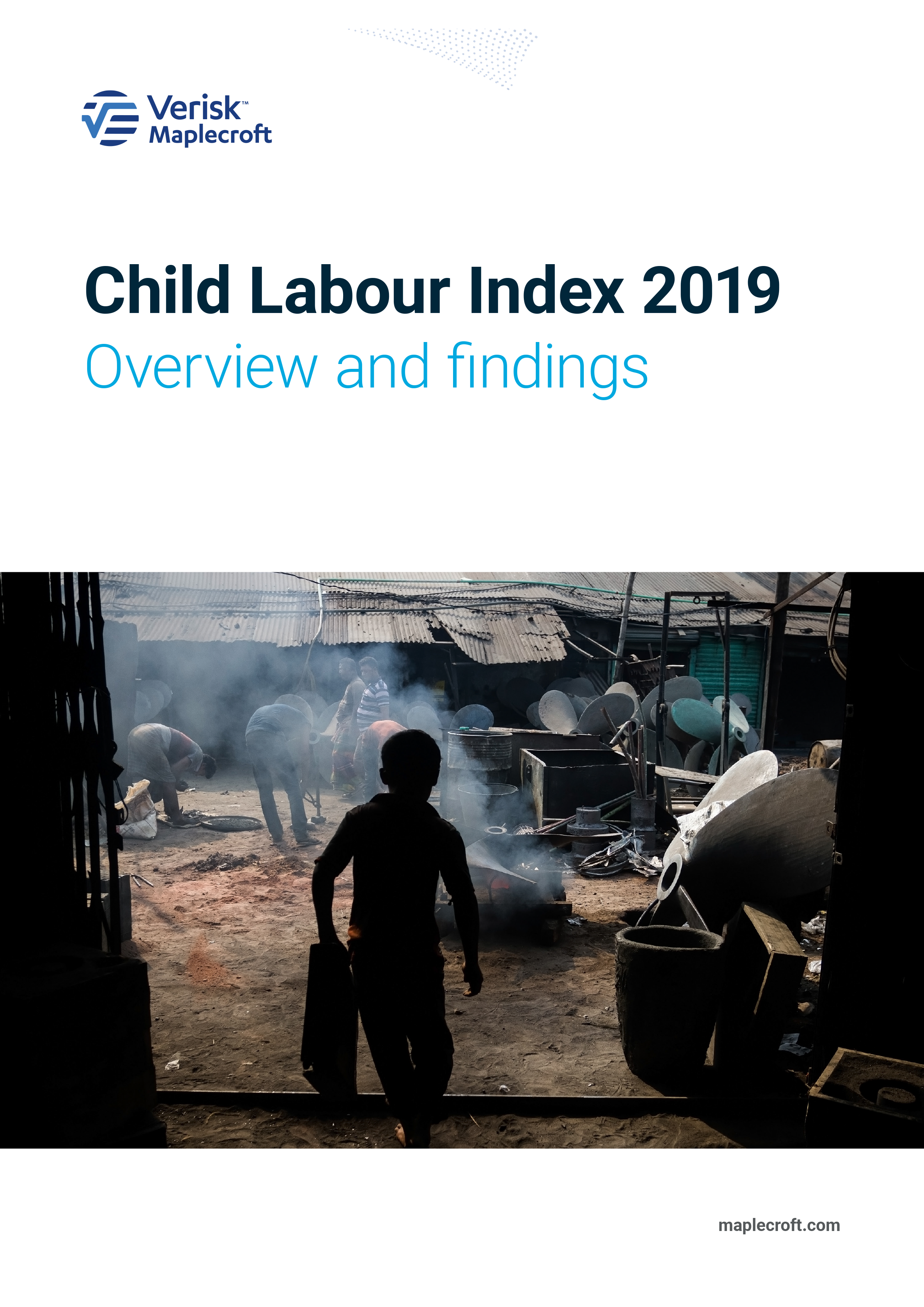Child Labour Index
Protect your brand from association with child labour
Knowingly or unknowingly using child labour in your supply chains is one of the most reputationally damaging labour rights issues. Ensuring you have a robust process in place to identify risky suppliers and prevent association with child labour is a critical first step in protecting the reputation of your brand.
The Child Labour Index is constructed with reference to the UN’s “Protect, Respect and Remedy “ framework and includes a comprehensive assessment of a country’s commitment to combatting child labour, the quality of its domestic legal framework, its enforcement capabilities and the extent of reported violations.
The Child Labour Index can help you
Perform
Perform due-diligence risk assessments and prioritise actions
Build
Build strong resilience, adequate policies and monitoring systems for combatting child labour in the value chain
Safeguard
Safeguard company reputation
Promote
Promote responsible business practices in line with international guidelines
This index is part of a larger dataset, our Human Rights Data
Who could benefit from the index?
Consumer & Retail
Consumer and retail goods and agri-business companies, particularly those operating in areas with high poverty rates
Tourism, Logistics & Transportation
Companies in the tourism, logistics and transportation sectors will be exposed to sex exploitation and trafficking of children, particularly when operating in developing economies
Responsible Sourcing & Procurement
Businesses can use the Child Labour Index to screen and prioritise high risk suppliers for exposure to child labour
Features and benefits at-a-glance
1000
risk issues, including subnational scoring
8
consistent dataset since 2016
19
indicators measuring the strength of legal framework, enforcement capabilities and reported violations
Report

Download a sample report
Download a sample report from our Child Labour Index: Progress on child labour flatlining in world’s manufacturing hubs.
DownloadRelated content
Human Rights Dataset
Risk data for human rights due diligence, compliance, and impact assessment
Global Risk Data
Decoding the global risk landscape
Human rights & social risk
Navigating the business and human rights landscape
German Supply Chain Act solutions
Risk analysis data, guidance, and support to help you meet the challenge of compliance
